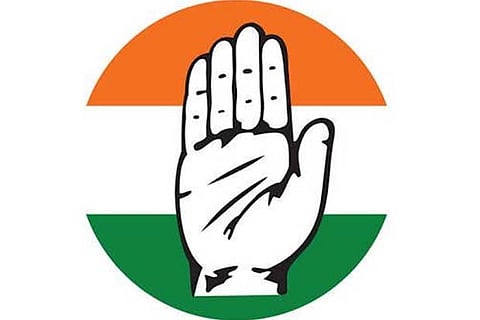

New Delhi
The Congress, which spearheaded an unprecedented move to impeach the Chief Justice of India today, had in fact opposed such proceedings initiated 25 years when it was in power.
The party today joined hands with six other opposition parties in moving notice for the impeachment of Chief Justice of India Dipak Misra but history shows that no motion has reached its logical conclusion.
If the motion after the inquiry by a three-member panel headed by a sitting apex court judge reaches Parliament, it would be the first instance of any CJI facing his removal and fourth judge from the higher judiciary.
It is also interesting to note that all the previous three impeachment motions have been moved when Congress was in power at the Centre.
The higher judiciary was in for the shock in 1993 for the first time in independent India when impeachment proceedings were initiated in Parliament against Supreme Court judge V Ramaswami on charges of corruption following the report of the inquiry commission.
Senior advocate and Congress Rajya Sabha lawmaker Kapil Sibal, who is at the forefront and spearheading the campaign to impeach the present CJI, however, had put up a spirited defence in favour of Justice Ramaswami in Lok Sabha.
The impeachment motion, moved during the P V Narasimha Rao government, failed in Lok Sabha as it could not muster support of two-third members of the house as required under Article 124 (4) of the Constitution.
Besides Justice Ramaswami, impeachment motion was moved against Calcutta High Court judge Soumitra Sen in 2011 on the charge of financial misappropriation as a judge and misrepresenting facts.
The motion was passed in the upper house and Sen, who had put up his defence in Rajya Sabha, sensed the outcome and resigned before the motion was put to vote in Lok Sabha.
Justice P D Dinakaran, the then Chief Justice of the Sikkim High Court, also faced the ignominy of being impeached after the inquiry panel had found enough prima facie materials relating to charges of land-grab, corruption and abuse of judicial office against him. He was transferred from the Karnataka High Court to the Sikkim High Court after he refused to follow orders to go on leave.
However, Dinakaran tendered resignation in 2011 before impeachment proceedings could begin.
In 2016, Justice Nagarjuna Reddy of the High Court of Andhra Pradesh and Telangana courted controversy when 61 Rajya Sabha members moved a petition for his impeachment on charges of misusing his position to "victimise" a "Dalit" judge.
Later, nine of the 54 members of the Rajya Sabha, who had proposed the initiation of proceedings against him, withdrew their signatures.
Opposition parties today met Vice President and Rajya Sabha Chairman M Venkaiah Naidu and handed over a notice with signatures of 64 MPs of the Upper House, accusing the CJI of five counts of "misbehaviour" and "misusing" authority.
The impeachment notice comes a day after the Supreme Court rejected a bunch of petitions seeking an independent probe into the death of judge B H Loya, who was hearing the Sohrabuddin Sheikh encounter case.
For initiating the impeachment process, a motion has to be moved by either 100 Lok Sabha members of Parliament or 50 Rajya Sabha MPs. If the motion is admitted, the Speaker of Lok Sabha or Chairman of Rajya Sabha constitutes an inquiry committee.
This inquiry committee has three members -- a Supreme Court judge, a high court Chief Justice and an eminent jurist. The committee frames charges and asks the judge to give a written response.
The judge also has the right to examine witnesses. After the inquiry, the committee determines whether the charges are valid or not and then it finally submits its report.
If the inquiry committee finds that the judge is not guilty, then there is no further action. If they find him guilty, then the House of Parliament which initiated the motion may consider continuing with the motion.
The motion is then debated and the judge (or his representative) has the right to represent his case. After that, the motion is voted upon. If there is two-thirds support of those voting, and majority support of the total strength of the House, it is considered to have passed. The process is then repeated in the other House.
After that, the Houses send an address to the President asking that the judge be removed from office.
Visit news.dtnext.in to explore our interactive epaper!
Download the DT Next app for more exciting features!
Click here for iOS
Click here for Android